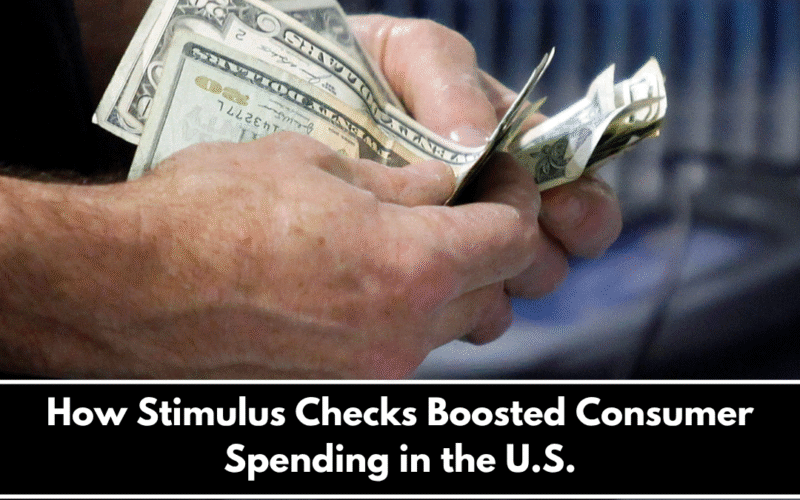When the COVID‑19 pandemic hit in early 2020, the U.S. government responded with direct cash transfers to households through stimulus checks. These payments, part of emergency relief bills like the CARES Act and the American Rescue Plan, were designed to help families, stabilize the economy, and boost spending at a time when the country was facing an unprecedented slowdown. But did they work? Evidence shows that stimulus checks played a major role in reviving consumer spending, especially among low- and middle-income households.
A Rapid Uptick in Spending Where It Mattered Most
After the first round of stimulus checks was sent, household spending saw a quick rebound. In the first 10 days alone, around 29 cents of every dollar received was spent. Most of this went to essential items like groceries, rent, and utilities. Lower-income households spent their stimulus money faster and on basic needs, while higher-income families saved or used the funds to pay off debts. This difference in behavior showed how stimulus checks helped those who needed immediate financial support. In fact, consumer spending that had dropped by 12% in April 2020 rebounded with increases of over 8% and 5% in May and June.
This surge in demand for essential goods helped many local businesses stay afloat and kept money circulating in the economy during lockdowns and job losses.
Targeted Impact, Multiplier Effects, and Macro Gains
Economists often talk about the “multiplier effect”—the idea that one dollar of government spending can generate more than one dollar in economic activity. In the case of stimulus checks, the effect was strong. By putting cash directly into the hands of people most likely to spend it, the government helped support jobs and economic growth. Lower-income households, which are typically more financially strained, used the money right away, leading to a bigger economic boost. This spending helped reduce the impact of the recession and prevented further declines in GDP. The third round of stimulus payments, which gave up to $1,400 per person, was especially impactful. In March 2021, disposable personal income jumped sharply due to these checks, giving the economy another boost during a critical phase of recovery.
Along with other relief measures like expanded unemployment benefits and the child tax credit, these checks played a big role in stabilizing household finances and maintaining consumer demand during uncertain times.
Stimulus checks were a powerful tool in the fight against the economic crisis caused by the pandemic. By providing quick financial support, they helped millions of Americans cover basic expenses and avoid deeper financial trouble. Most importantly, these payments drove a noticeable increase in consumer spending, especially among those who needed help the most. While they weren’t a permanent solution, they helped prevent a much worse economic collapse and showed how direct aid can work effectively in times of crisis.
FAQ’s:
1. How much of each stimulus check was actually spent?
On average, about 29 cents of every dollar was spent in the first 10 days, mostly on necessities like food, rent, and bills.
2. Did low-income households benefit more from stimulus checks?
Yes. Low-income and financially struggling families spent a higher portion of their checks quickly, helping boost local economies.
3. Did stimulus checks help revive consumer spending after the pandemic began?
Absolutely. After spending fell sharply in early 2020, stimulus payments helped turn things around, especially in the months that followed their distribution.
4. What is the multiplier effect related to stimulus checks?
It refers to the increased economic activity created when stimulus money is spent. Because many people used their checks immediately, the overall benefit to the economy was higher than the amount given.
5. Were stimulus checks the best form of economic support?
They were effective, especially for quick relief. However, programs like expanded unemployment benefits may have provided more ongoing support for those who lost jobs.
